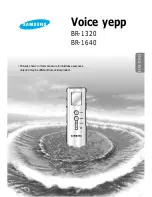
100/180MM DISTRIBUTED GRAPHIC RECORDER: USER GUIDE
HA029324
Issue 11 Oct 14
Page 99
4.3.11 MATHS CONFIGURATION (Cont.)
Function
This picklist allows the relevant maths function to be selected. In the following description, the word
‘channel’ is used as an umbrella term for input channels, maths channels, totalisers etc.
Off
Allows the function to be disabled. Once ‘Apply’ has been actioned, all confi guration
for this Maths number is lost.
Constant
Allows a maths channel to be set to a constant value.
Add
Allows any channel or a constant value to be added to any other.
Subtract
Allows any channel or a constant value to be subtracted from any other.
Multiply
Allows any channel or a constant value to be multiplied by any other.
Divide
Allows any channel or a constant value to be divided by any other. Should the value of the divi-
sor pass through zero, ‘Maths Channel N error’ and ‘Maths Channel Failure’ messages appear.
Group average*
The instantaneous value of all the channels in the source group added together and
divided by the number of channels in the group. For example, in a group of four chan-
nels whose instantaneous values are 4, 8, 2 and 6, the group average is (4 + 8 + 2 +
6) / 4 = 5. The relevant source group is selected by picklist. Should a channel return a
non-valid value, it is excluded from the calculation, and the result of the function is the
average of the remaining channels.
Group minimum
*
The lowest value of any of the channels in the source group. For example, in a group
of four channels whose instantaneous values are 4, 8, 2 and 6, the group minimum is
2. The required source group is selected by picklist. Should a channel return a non-
valid value, it is excluded from the calculation, and the result of the function is the
minimum of the remaining channels.
Group maximum* The highest value of any of the channels in the source group. For example, in a group
of four channels whose instantaneous values are 4, 8, 2 and 6, the group maximum
is 8. The required source group is selected by picklist. Should a channel return a
non-valid value, it is excluded from the calculation, and the result of the function is the
maximum of the remaining channels.
*Note: If a maths channel with a Group function is contained within its own source group, then it
will act on itself as well as on the other group contents, thus changing the calculation.
For example, if Group 1 were to contain channel 1, channel 2 and maths channel 1, where maths
channel 1 had the function ‘Group Maximum’ for Group 1, then the Group Maximum would be-
come a latching function, showing the highest value ever reached by channel 1, channel 2 or
maths channel 1 since the group was confi gured. In order to trace the instantaneous highest
value, channel 1 and channel 2 would have to be contained in e.g. Group 1, and the group maxi-
mum channel contained in, say, Group 2, but with a source of ‘Group 1’.
Modbus Comms Input
Allows Modbus Communications to be selected for reading values from slave instru-
ments - see
section 4.3.15
.
EtherNet/IP Comms Input
Allows EtherNet/IP to be selected for reading values from a client instrument -
see
section 4.3.21
.
Stopwatch
This causes the value of the maths channel to increment in milliseconds. The value
can be displayed in milliseconds (PV format = numeric), or in HH:MM:SS (PV format =
elapsed time). The value can be held, using a ‘Disable’ job or set to zero either using a
‘reset’ job or by the operation of the ‘Reset now’ button in the maths confi guration page.
See
section 4.7
for a description of jobs. The function value is retained during power off.
Note: The scale low and high values are displayed in numeric format for both numeric and
elapsed time display formats
Summary of Contents for 6100
Page 2: ......
Page 4: ...EUROT H ERM ...
Page 377: ...100 180 MM DISTRIBUTED GRAPHIC RECORDER USER GUIDE This page is de ...
Page 396: ......
















































